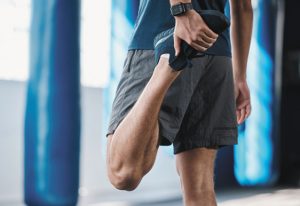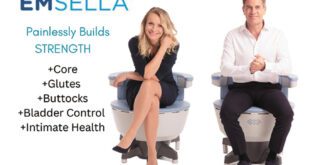 The shift towards remote and sedentary jobs has become increasingly prevalent in the ever-evolving landscape of modern work.
The shift towards remote and sedentary jobs has become increasingly prevalent in the ever-evolving landscape of modern work.
Many individuals now find themselves engaged in occupations that demand long hours of sitting, whether working from home, spending extended periods at a desk, or performing tasks that necessitate prolonged periods of inactivity. While these jobs offer flexibility and convenience, they highlight the potential health risks associated with sedentary behavior, particularly the increased likelihood of developing varicose veins. In this modern work age, we need to think about the causes of varicose veins, the dangers posed by prolonged sitting, the pressure on the sitz bones, and practical strategies to incorporate movement into daily routines for individuals whose occupations demand significant amounts of time in a seated position. It is essential to comprehend these factors to proactively address and prevent the development of varicose veins, promoting overall vascular health.
Sedentary lifestyles, characterized by prolonged periods of sitting, can significantly contribute to the development of varicose veins. Varicose veins occur when blood vessels, usually in the legs, become enlarged and twisted. While various factors contribute to their development, prolonged sitting is a primary culprit. When you sit for extended periods, the blood flow in your legs may slow down, leading to increased pressure in the veins.
The primary cause of varicose veins is weakened or damaged valves within the veins. These valves normally regulate blood flow, preventing it from flowing backward. When these valves fail to function properly, blood accumulates and pools in the veins, causing them to swell and become varicose.
Sitting poses unique patterns of obstruction to venous outflow creating venous congestion in the calf and a very tight feeling that may include actual swelling. When we sit, we tend to sit on the soft portion of the mid-thigh. This compresses the femoral vein making venous drainage more difficult. Our upright posture creates acute angles at the groin and the knee, compressing the femoral vein further and the popliteal vein at the knee. This is exacerbated by being overweight and also short stature. Things that can alleviate the congestion from sitting position: 1. Sit forward with pressure primarily on the sitz bones rather than the mid-portion of the thigh where venous compression occurs.
2. Keep your feet on the ground to decrease pressure on the thighs. 3. Decrease the angle at the knee by stretching out the lower leg, decreasing compression of popliteal vein helping venous drainage from the calf. 4. Similarly, decrease the angle at the groin so the femoral vein at the groin is less likely to be
compressed. 5. Walk every 1-2 hours activating the calf muscle pump that drives the venous system.
One practical approach is to invest in an ergonomic chair that provides proper support and encourages good posture. Chairs with adjustable features, such as lumbar support and seat height, can help distribute the weight evenly and reduce pressure on the sitz bones. Additionally, using a cushion or seat pad specifically designed to relieve pressure points can make a notable difference in enhancing comfort during prolonged periods of sitting.
Regular breaks to stand, stretch, or walk are crucial in preventing pressure accumulation on the sitz bones. Simple movements, such as standing up and performing gentle stretches or taking short walks,
stimulate blood flow, reducing the risk of blood pooling in the veins. Integrating these brief breaks into the work routine benefits vascular health and contributes to overall well-being and productivity.
Furthermore, individuals can experiment with alternative seating options, such as stability balls or standing desks, to vary their sitting positions and
alleviate pressure on the sitz bones. These alternatives engage different muscle groups and promote better posture, reducing the strain on the veins and supporting vascular health. This writer enjoys her under-desk elliptical to keep her veins pumping blood as she writes content for readers like you! I am stepping right now as I type this. Flexible slant boards that promote calf activation while sitting can also be helpful.
Additionally, engaging in exercises that target the calf muscles, such as calf raises or ankle circles, can help pump blood back up to the heart, reducing the likelihood of blood pooling in the veins. Maintaining a healthy weight through a balanced diet and regular exercise is also crucial, as excess weight can strain the veins.
Staying adequately hydrated is a crucial yet often underestimated aspect of preventing varicose veins, especially for individuals with sedentary jobs requiring prolonged sitting periods. Dehydration can exacerbate the risk of developing or worsening varicose veins, affecting blood viscosity and overall circulation. When you’re dehydrated, your blood tends to become thicker, making it more challenging to flow smoothly through the veins. This increased viscosity can lead to slower blood circulation, raising the likelihood of blood pooling in the veins, which is a significant factor in the development of varicose veins. Drinking ample water throughout the day helps maintain optimal blood viscosity and supports efficient blood flow. Hydration is essential for overall vascular health, and it plays a key role in preventing blood stagnation in the lower extremities, where varicose veins commonly occur.
In addition to promoting proper blood circulation, staying hydrated benefits the elasticity of blood vessels and the overall health of the cardiovascular system. This, in turn, contributes to preventing varicose veins and other vascular issues.
Get support for your veins and circulation problems today
You may need medical treatment for your veins, and the Central Florida Vein and Vascular Center wants to help. Contact us today to learn more about our services and how we can help you live better. Our board-certified and expertly trained Vascular Surgeons specialize in minimally invasive vein therapy.
For more information regarding the prevention of varicose veins, please see our blog at: https://cfvein.com/best-sitting-stretches/
Central Florida Vein and Vascular Center
(352) 562-0078 . www.cfvein.com
13953 NE 86th Terrace, Unit 101
Lady Lake, FL 32159
MOST PROCEDURES ARE
COVERED BY INSURANCE
Convenient Golf Cart Path Access
 Central Florida Health and Wellness Magazine Health and Wellness Articles of the Villages
Central Florida Health and Wellness Magazine Health and Wellness Articles of the Villages



